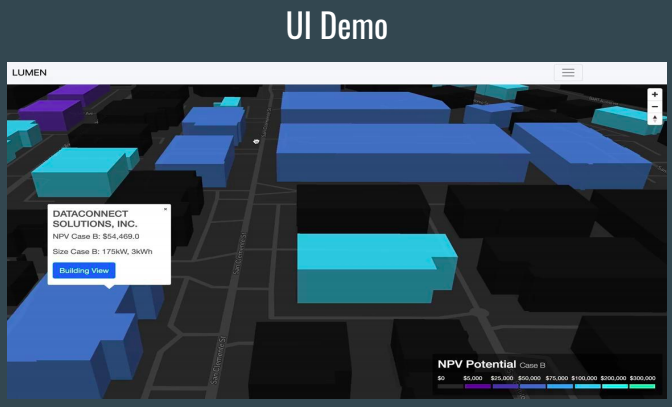Lumen Energy Powering Cities Globally
A team of students from the University of California, Berkeley created a data platform that profiles buildings for their suitability to clean energy. Currently, global decarbonization requires a swift deployment of new renewable energy infrastructure. Fortunately, many buildings can now be powered profitably by local clean energy. Yet only 1.6% of the 125 million buildings in the US today have rooftop solar today.
The students worked with a UCB campus building a dataset and implemented a data cleaning pipeline to filter anomalous data. After the data cleaning the team performed EDA to select buildings for modeling and predictions. After an in-depth exploration into ANNs with LSTM and S2S architectures, the team pivoted to the ARIMA model. Where they conducted a Dickey-Fuller test on weather data individually. The results indicated that both time-series are stationary. The final output ARIMA had 65% accuracy.

The team of students created a user interactive interface that allows buildings’ electrical loads to be displayed as a heatmap. They achieved predictive accuracy above 78% on the test dataset to validate the model capabilities they created.
Converting buildings to solar-powered centers and enabling Lumen to consult for the right projects in this process. Along with Lumen, the students hope to promote a higher sensitivity towards sustainable energy for buildings. This will improve the overall consciousness towards clean energy and benefit the cities from consuming power through non-renewable sources. It also offers an opportunity to be self-sustaining. Solar energy companies that cooperate directly with commercial estate management to deploy solar panel solutions.
Project by: Neelabh Mishra, Yana Mykhailovska, Lydia Ruiz, Stephanie Stickel, Neelabh Mishra